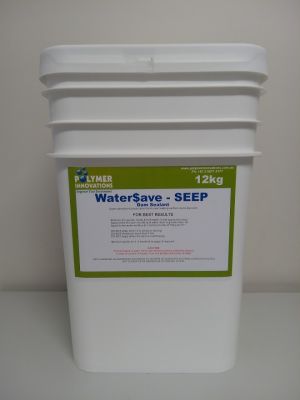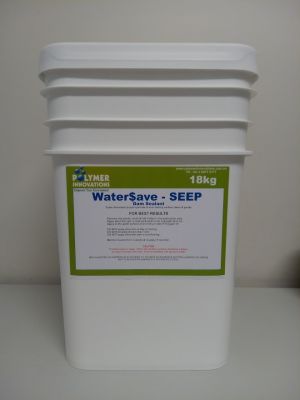
Whether you are looking at sealing a leaking dam or constructing a new one, here are a few things you should know.
Leaks
Earth based dams can leak due to poor construction, incorrect soil type or due to age. If you suspect your dam is leaking, monitor the dam levels to confirm there is a leak & the water loss is not due to evaporation. A wet area forming nearby can also indicate a leak. This can be caused by water escaping through or under the dam wall. If it is leaking but there is no water pooling nearby, this would indicate the dam is leaking from it’s base. If your dam is leaking, contact one of our Dam Sealing Experts for a free dam assessment or take a look at how our Water$ave Dam Sealers can help stop the leak.
Soil Type
Before building your dam consider the soil types in your area & try to position it in the most favourable area. Having a highly sandy soil will increase the risk of leaks has the soil will not hold water like other soil types, such as clay. In some cases, poor soil is unavoidable. Ask our Dam Sealing Experts how applying our Water$ave Dam Sealers before construction can reduce future leaks.
Construction
Employing an earth mover who has experience &/or specialises in dam construction is always preferable. Construction when the soil is moist is desirable. Your dam should include a spillway to enable water to escape should the dam reach capacity. Add our Water$ave Dam Sealers to further reduce the risk of future leaks.
Changes in the dam’s structure can cause leaks. Altering the size of the dam &/or adding a spillway after the original construction, can cause other parts of the dam to shift & create a leak. Always consider this when making structural changes.
Age
The age of a dam can play a role in its ability to hold water. Leaks can appear from changes in the landscape over time. If a dam has dried out for a long period of time cracks & voids can form & not just on the surface but deeper in its structure. Water$ave Plug & Water$ave Seep can assist in sealing these cracks & voids. It can be applied directly to the water surface without draining any remaining water.







Comments